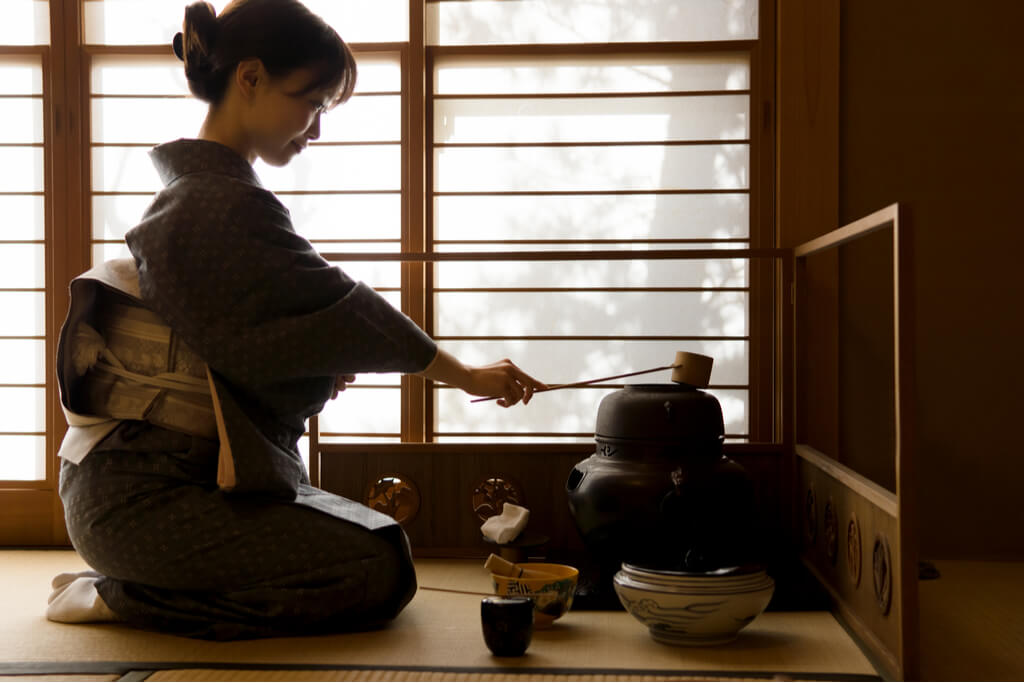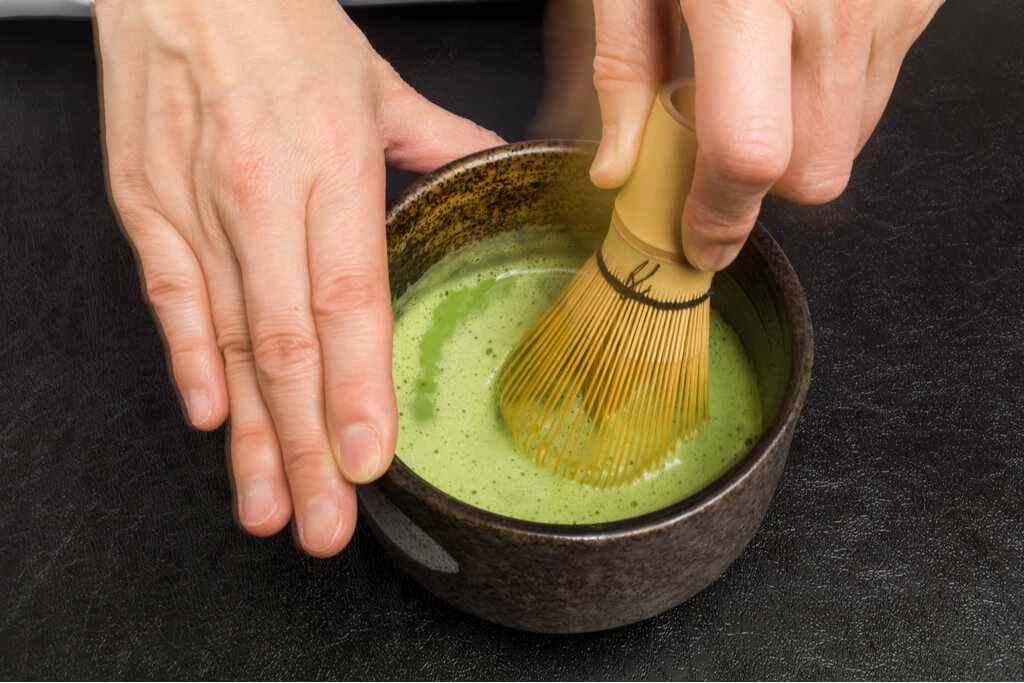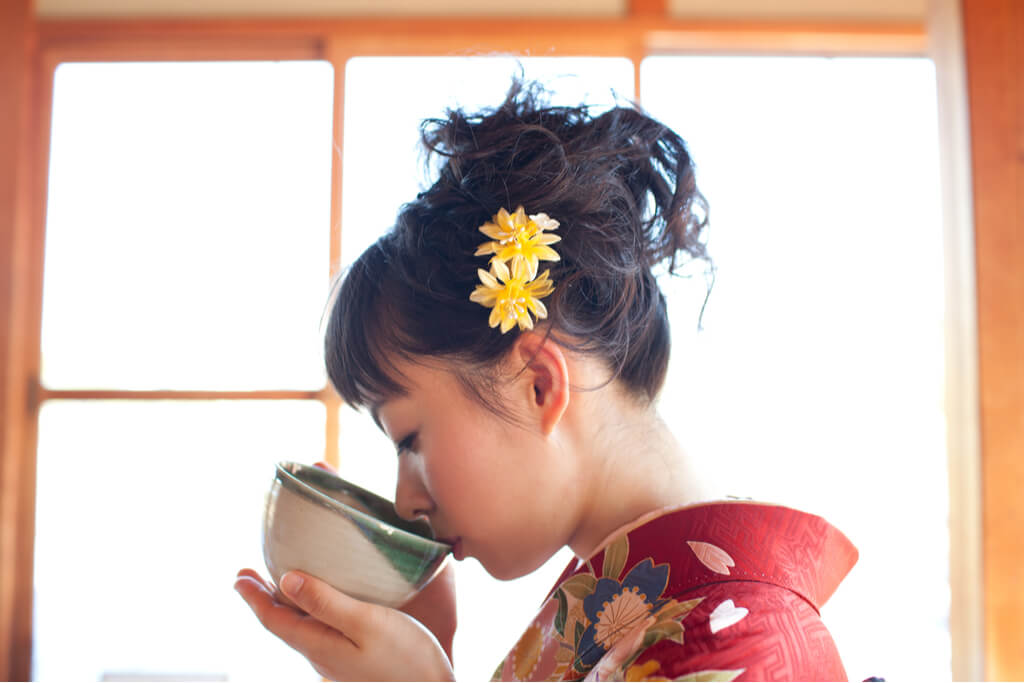Japanese Tea Ceremony: Everything You Need To Know About This Time Honored Tradition
Tanner Schroeder
Posted on June 21, 2021
Share:

The Japanese tea ceremony is called 茶道 (pronounced sadō or chadō), which means “the way of tea” in Japanese. The ceremony is a way of practicing Zen, a Japanese concept based on maintaining order in the state of one’s mind. Participating in a tea ceremony is one of the most unique experiences when visiting Japan. So, here is everything you need to know before you go.
The History of the Japanese Tea Ceremony
In the 8th century, tea came to Japan from China, capturing popularity as a medicinal beverage. The priests and upper classes primarily consumed it. Gradually, drinking and preparing tea became an art, as nobles competed to show off their knowledge of tea and their own expensive teaware.
This changed when Sen no Rikyu (1522-1591) introduced a more austere, spiritual side to the tea ceremony. The primary tea ceremony schools in Japan today trace their lineage back to the philosophy of Sen no Rikyu.
The Ten Tools of the Japanese Tea Ceremony
While tea ceremonies may vary based on the school and the host, most tea ceremonies utilize these essential tools:
- Tea whisk
- Tea scoop
- Powdered green tea
- Tea bowl
- Kettle
- Brazier
- Silk cloth representing the soul of the host
- Decorative items, like a scroll or arranged flowers
- Napkins to wipe the lip of the bowl
- Japanese wagashi sweets

The host carefully chooses each item, with particular attention given to the tea bowls and types of sweets, typically selected based on the traditional Japanese calendar of seasons. Additionally, they assign specific table placements for the guest’s full enjoyment.
Are you interested in enjoying even more delicious tea? Try Sakuraco! With Sakuraco’s monthly selection of artisanal Japanese teas and confections, you can experience the flavors and serenity of a Japanese tea ceremony from home.

How do I participate in a tea ceremony?
The tea ceremony is a choreographed ritual, where everything is designed for the sake of the guest. There are several branches of the tea ceremony so certain elements might vary, but these are the general steps you follow when participating in a ceremony.
When you arrive at the ceremony
Arrive a little before the set time. Afterward, the staff will show you to a waiting room and offer you a cup of roasted barley or kombu tea. You can wait there until all the guests arrive. Wash your hands and mouth in the stone basin (tsukubai) in the garden before entering the tea house, where the ceremony will be held.
Enter the tea house. The entranceway is low, so you must lower your head as a sign of respect when entering. Take off your shoes, then sit in seiza (on your knees) on the tatami room floor. After everyone takes their seats, the host will enter and individually greet each person.
Admire the carefully selected decorations of the room. A tea ceremony typically occurs in a tatami room, where an alcove (tokonoma) houses a hanging scroll and/or arranged flowers. The host cleans the tools they will use in front of the guests.
During and after the ceremony
The host prepares the tea. Usually, three scoops of matcha powder are added to the bowl, along with a few ladles full of hot water. They are then whisked together into a foamy paste. You can also learn how to make matcha without a whisk. If you would like to experience freshly prepared matcha from home.
Traditional Japanese sweets are distributed. You eat the sweet entirely before drinking the matcha. The host hands you (or the first guest) a bowl of matcha. The guest rotates the bowl 180 degrees so the decorative part is facing away from them (if the bowl is symmetrical, this is less of a concern).
Drink from the bowl, wipe the lip where you drank from, then give the bowl a quarter turn, and pass it to the person next to you. You receive your bowl of thinner tea. You can be more casual at this stage and speak with the host and the other guests about the ceremony.
The host will collect and wash the tools of the tea ceremony. Finally, the host will offer the cleaned tools up for inspection. You check the tools as a sign of appreciation for the host. The host will put away the tools. This is the sign that the ceremony is over.

What etiquette should I follow at a tea ceremony?
If you are invited to, or sign up for, a tea ceremony, here are some tips to help you and the other’s guests’ experience more enjoyable. Normally, you would wear a kimono to attend a tea ceremony. However, if you do not own one, it is OK to wear Western clothing instead. For example, the dress code ranges from business casual to formal.
Wearing a kimono would suit a tea ceremony, but simple Western wear is also acceptable. You should wear simple, conservative clothing to not distract from the moment. Wear simple clothes that don’t make noise (like clanging jewelry), and avoid wearing jewelry that might damage the valuable bowls.
Additionally, refrain from wearing perfumes or cologne that might distract from the tea ceremony. Moreover, if you have long hair, tie it up in a bun out of respect for the host and to keep your hair out of the tea. In like fashion, keep conversation to a minimum. However, if you’re interested in speaking, focus on all topics related to the ceremony. Above all, relax and enjoy yourself!

What kind of sweets are used in the Japanese tea ceremony?
In the traditional Japanese tea ceremony, skilled artisans craft exquisite sweets integral to the experience. These sweets, called wagashi, complement the tea flavors and elevate the ceremony’s overall harmony. They typically use natural ingredients such as sweet azuki bean paste, matcha (powdered green tea), agar-agar, and seasonal fruits. Some of these sweets include namagashi (rice flour and sweet bean paste filling), mochi (rice cakes), and nerikiri (Japanese wagashi that uses sweet white bean jam, Chinese yam, and rice flour).
Where can I find a tea ceremony in Japan?
There are many types of tea ceremonies across Japan, with varying levels of formality. While most tea ceremonies are invitation-only, some organizations hold tea ceremonies open to tourists. You can also sign up for a guided tea ceremony with hosts or translators who speak English and can show you through the steps. During these more casual ceremonies, you can focus on enjoying the experience, as there is no pressure if you get something wrong. Would you like to try participating in a tea ceremony? Let us know in the comments!

Discover authentic flavors with Sakuraco
Get Sakuraco 

Discover authentic flavors with Sakuraco
Get Sakuraco 
Related Articles

Hatsumode: Why Is It Japan’s Most Important Tradition?
Hatsumode is the first visit to a shrine or temple in the New Year in Japan, and it is one of the country’s most important traditions. Every year, millions of people participate, demonstrating the profound connection between this custom and daily life.

Japanese Fish Bait: The Beautiful Art of Kebari
Kebari are traditional hand-tied flies used for freshwater fishing in Japan, especially in mountain streams where small insects form the main diet of native fish. Instead of bright plastic lures, kebari use feathers, thread, and natural materials to create subtle movements in the water.

Japan Holidays Guide: Relax, Explore, and Delight in Festive Fun
As the year draws to a close, everywhere buzzes with preparations for the holidays, and Japan is no exception. Despite the cold winter weather, you can feel warmth in the scenery, decorations, and festive activities across the country. Let’s explore the unique experiences of holidays in Japan that many people dream of enjoying at least once in their lifetime!

Tokyo Gardens: Five Beautiful Traditional Japanese Gardens to Visit
Tokyo gardens offer a relaxing escape for visitors looking to get a breath of fresh air. However, Tokyo has more than just the typical gardens we see in the West. Let’s explore five traditional Japanese gardens and what makes them unique!


